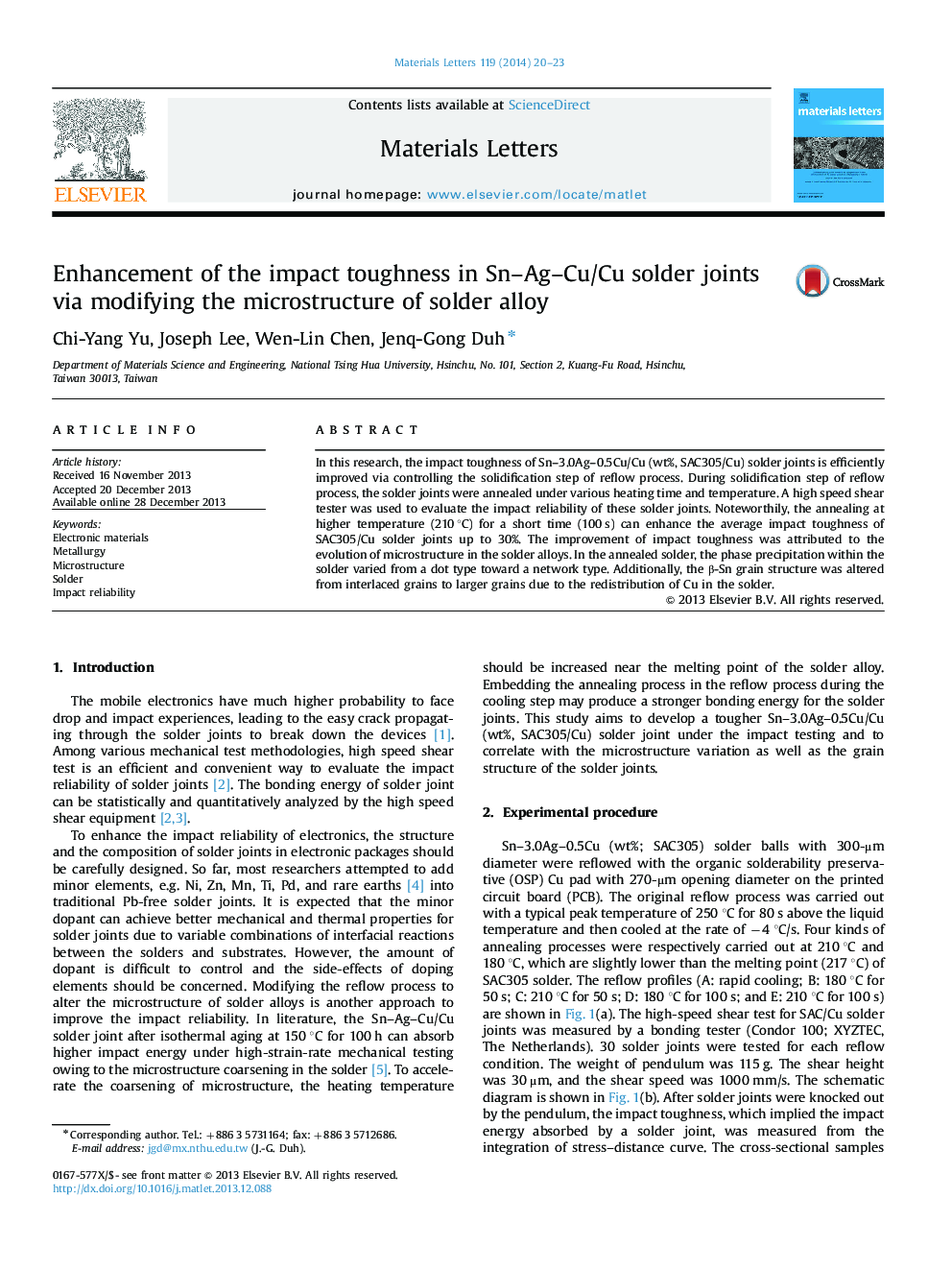| Article ID | Journal | Published Year | Pages | File Type |
|---|---|---|---|---|
| 1644602 | Materials Letters | 2014 | 4 Pages |
•Short-time annealing in the post-reflow process can improve the impact toughness of solder joints.•The annealing step changes the Sn grain structure from interlaced type toward larger-grain type.•The elemental distribution relates to the grain structure and microstructure in the solder.•The softer solder can absorb more impact energy to enhance the impact toughness of solder joints.
In this research, the impact toughness of Sn–3.0Ag–0.5Cu/Cu (wt%, SAC305/Cu) solder joints is efficiently improved via controlling the solidification step of reflow process. During solidification step of reflow process, the solder joints were annealed under various heating time and temperature. A high speed shear tester was used to evaluate the impact reliability of these solder joints. Noteworthily, the annealing at higher temperature (210 °C) for a short time (100 s) can enhance the average impact toughness of SAC305/Cu solder joints up to 30%. The improvement of impact toughness was attributed to the evolution of microstructure in the solder alloys. In the annealed solder, the phase precipitation within the solder varied from a dot type toward a network type. Additionally, the β-Sn grain structure was altered from interlaced grains to larger grains due to the redistribution of Cu in the solder.
